42 how do ocean currents work
How do ocean currents work? - Jennifer Verduin ... How do ocean currents work? - Jennifer Verduin - TED-Ed You May Also Like. The Latest ocean currents - Convection Currents How Convection Currents Affect Ocean Currents. Convection in the ocean happens when cold dense water sinks to the bottom of the ocean. The. water was probably very dense because of it saltiness too. Then salty water from. the equator region flows in and then sinks. The process goes in a big loop. This. creates deep ocean currents.
How do ocean currents work? - Jennifer Verduin | TED-Ed In 1992, a cargo ship carrying bath toys got caught in a storm. Shipping containers washed overboard, and the waves swept 28,000 rubber ducks and other toys into the North Pacific. But they didn't stick together -- the ducks have since washed up all over the world. How did this happen? Jennifer Verduin dives into the science of ocean currents.

How do ocean currents work
What happens when ocean currents meet - How to Answer (Detailed Solution Below) Detailed Solution. Warm currents: Those currents that flow from the Equator towards the poles are warmer than the surrounding water and so they are called warm currents.Examples- Kuroshio current, North Pacific current. Cold currents: The ocean currents that flow from the polar areas towards the Equator are cooler compared to the surrounding water, so they are ... Curious Kids: how do currents form under water? It forms beneath the breaking waves, and pulls the water back toward the sea, across the sandy seabed, out past where the waves are breaking. Though the undertow helps to get some of the water back... Currents, Gyres, & Eddies - Woods Hole Oceanographic ... 22/10/2020 · Currents are coherent streams of water moving through the ocean and include both long, permanent features such as the Gulf Stream, as well as smaller, episodic flows in both coastal waters and the open ocean. They are formed primarily by wind blowing across the surface of the ocean and by differences in the temperature, density and pressure of water and are …
How do ocean currents work. Jennifer Verduin: How do ocean currents work? | TED Talk How do ocean currents work? In 1992, a cargo ship carrying bath toys got caught in a storm. Shipping containers washed overboard, and the waves swept 28,000 rubber ducks and other toys into the North Pacific. How Rip Currents Work | HowStuffWorks A rip current is a narrow, powerful current of water running perpendicular to the beach, out into the ocean. These currents may extend 200 to 2,500 feet (61 to 762 m) lengthwise, but they are typically less than 30 feet (9 m) wide. Rip currents can move at a pretty good speed, often 5 miles per hour (8 kph) or faster. Ocean currents | National Oceanic and Atmospheric ... Large-scale surface ocean currents are driven by global wind systems that are fueled by energy from the sun. These currents transfer heat from the tropics to the polar regions, influencing local and global climate. The warm Gulf Stream originating in the tropical Caribbean, for instance, carries about 150 times more water than the Amazon River. Go With the Flow: An Ocean Currents Game | NASA Space ... Apr 07, 2022 · The rules of the game are how ocean currents work in real life, too. Salt makes water heavier, so it sinks. Heat makes water lighter, so it rises. If you have tasted the ocean, you know it is very salty. Salty water is "thicker" or denser than fresh water. That is why it is easier to float in the ocean than in a fresh-water swimming pool or lake.
Rip Currents - Currents: NOAA's National Ocean Service ... A rip current, sometimes incorrectly called a rip tide, is a localized current that flows away from the shoreline toward the ocean, perpendicular or at an acute angle to the shoreline. It usually breaks up not far from shore and is generally not more than 25 meters (80 feet) wide. Rip currents typically reach speeds of 1 to 2 feet per second. Thermohaline Circulation - Currents: NOAA's National Ocean ... Winds drive ocean currents in the upper 100 meters of the ocean's surface. However, ocean currents also flow thousands of meters below the surface. These deep-ocean currents are driven by differences in the water's density, which is controlled by temperature (thermo) and salinity (haline). This process is known as thermohaline circulation. How Melting Arctic Ice Affects Ocean Currents | Center for ... The currents in the North Atlantic are part of a global pattern called thermohaline circulation, or the global ocean conveyor. If they were to stop, this would not be the first time that the global ocean conveyor was halted. There is evidence from sedimentary rocks and ice cores that it has shut down several times in the past which caused changes in climate. One of the most well … Convection Currents and How They Work - ThoughtCo Simply add a few peas or bits of paper to trace the current flow. The heat source at the bottom of the pan heats the water, giving it more energy and causing the molecules to move faster. The temperature change also affects the density of the water. As water rises toward the surface, some of it has enough energy to escape as vapor.
How Ocean Currents Work? - Windy.app An ocean current is the movement of ocean water from area A to area B. What causes that movement? First of all, the wind. When the wind blows above the surface of the ocean, it moves the upper layers of water. The movement is transmitted to deeper layers and from them to even deeper waters. Understanding Surface Currents vs Deep Ocean Currents Understanding how these different ocean currents work, what impacts ocean currents, and tracking changes in these systems can help us better plan for climate change, map shipping routes, and optimize the placement of offshore renewable energy and aquaculture operations. What causes surface currents? There are many factors that cause ocean currents. How Ocean Currents Work - ThoughtCo Surface currents are those found in the upper 400 meters (1,300 feet) of the ocean and make up about 10% of all the water in the ocean. Surface currents are mostly caused by the wind because it creates friction as it moves over the water. This friction then forces the water to move in a spiral pattern, creating gyres. How Ocean Currents Work (and How We Are Breaking Them ... PBS Member Stations rely on viewers like you. To support your local station, go to: ↓ More info and sources below ↓Head over to A...
Climate Zones & Ocean Currents Video For Kids | Middle ... How do ocean and air currents help regulate the temperature of Earth? ANSWER. Ocean and air currents work together to distribute heat and moisture around Earth. Less-dense air and water rise; denser air and water sink. This creates a series of circulation systems that span the globe. These systems typically flow clockwise in the Northern ...
What ways have ocean currents influence history? How do ocean currents work? Ocean currents are driven by a range of sources: the wind, tides, changes in water density, and the rotation of the Earth. The topography of the ocean floor and the shoreline modifies those motions, causing currents to speed up, slow down, or change direction.
How Do Ocean Currents Transfer Heat? - Reference.com How Do Ocean Currents Transfer Heat? The oceans transfer heat by their currents, which take hot water from the equator up to higher latitudes and cold water back down toward the equator. Due to this transfer of heat, climate near large bodies of water is often extreme and at times, unpredictable. The temperatures of the world's oceans are ...
How Ocean Currents Work - HowStuffWorks Few bodies of water have the intricate system of currents that oceans do, though. Ranging from predictable tidal currents to fickle rip currents, ocean currents may be driven by tides, winds or differences in density. They profoundly affect the weather, marine transportation and the cycling of nutrients. How exactly?
Ocean Currents Investigation Ocean Currents and Climate We learned in this activity, that ocean currents move warm water around the globe, and transfer that energy to that atmosphere, which moderates climates over continents. This makes locations in polar regions much warmer than they would be if oceans were not moving.
The Major Ocean Currents of the World - Earth How 19/01/2021 · 1. TED Ed Lesson – How Ocean Currents Work. This TED-Ed lesson features how ocean currents work. It starts with a story of how rubber ducks got swept away by ocean currents. Then, it gets into what influences ocean currents. For example, the wind, tides, water density, rotation, and even ocean floor topography influences currents in the oceans.
How do ocean currents move and how does this affect ... How to do your ocean currents experiment. Again my activity is inspired by Phyllis over at All Things Beautiful. This particular time, it's her Ocean temperature and wind experiment. Though I'm wishing we had done her salinity currents experiment as well.
How do ocean currents work? - Quora Answer (1 of 10): Simply, because the sun causes heat differences in ocean regions, making salinity differences and surface winds. Also, the Earth's rotation tilts the ocean surface. The coriolis effect happens because the earth rotates toward the east. It can be thought of as water piling up be...
How do ocean currents work? - The Kid Should See This These ducks and their worldwide adventure unexpectedly helped researchers chart how ocean currents work. In this TED-Ed by Jennifer Verduin, directed by Cabong Studios, we learn how surface currents, deep ocean currents, wind, salt, gyres, the Coriolis Effect, and other powerful factors affect how water moves around the planet. TEACHING RESOURCES:
Ocean current - Wikipedia An ocean current is a continuous, directed movement of sea water generated by a number of forces acting upon the water, including wind, the Coriolis effect, breaking waves, cabbeling, and temperature and salinity differences. Depth contours, shoreline configurations, and interactions with other currents influence a current's direction and strength.
How Do Ocean Currents Work? Video for 6th - 12th Grade ... This How Do Ocean Currents Work? Video is suitable for 6th - 12th Grade. Find out what puts the motion in the ocean with a short video about how ocean currents work. An animated video uses the story of little yellow ducky bathtub toys to show how currents flow through the world's oceans.
Earth Science for Kids: Ocean Waves and Currents Do currents impact the climate? Ocean currents can have a significant impact on climate. In some areas warm water is moved from the equator to a colder region causing the region to be warmer. One example of this is the Gulfstream current. It pulls warm water from the equator to the coast of Western Europe. As a result, areas such as the United Kingdom are typically much …
Ocean Currents and Climate - National Geographic Society Ocean currents are located at the ocean surface and in deep water below 300 meters (984 feet). They can move water horizontally and vertically and occur on both local and global scales. The ocean has an interconnected current, or circulation, system powered by wind, tides, the Earth’s rotation (Coriolis effect), the sun (solar energy), and water density differences. The topography …
Movements of ocean water: Waves, Tides and Ocean Currents Nov 21, 2017 · Hence, ocean currents in the northern hemisphere move in a clockwise (towards right) direction and ocean currents in southern hemisphere moves in an anti-clockwise (towards left) direction (In the Indian Ocean due to the impact of the Asian monsoon, the currents in the northern hemisphere do not follow this pattern of movements all time). 3.
How do ocean currents work? - Jennifer Verduin - YouTube -- In 1992, a cargo ship carrying bath toys got caught in a storm. Shipping containers washed overboard, and the waves swept 28,000 rubber ducks and other toys into the North Pacific. But they...
How do floats work | Argo How do floats work What does an Argo float do? The standard Argo float mission is a 10-day cycle, with most of the float’s time spent drifting along with deep ocean currents, followed by taking a series of measurements as it moves back up (profiles) to the ocean surface.
Currents, Gyres, & Eddies - Woods Hole Oceanographic ... 22/10/2020 · Currents are coherent streams of water moving through the ocean and include both long, permanent features such as the Gulf Stream, as well as smaller, episodic flows in both coastal waters and the open ocean. They are formed primarily by wind blowing across the surface of the ocean and by differences in the temperature, density and pressure of water and are …
Curious Kids: how do currents form under water? It forms beneath the breaking waves, and pulls the water back toward the sea, across the sandy seabed, out past where the waves are breaking. Though the undertow helps to get some of the water back...
What happens when ocean currents meet - How to Answer (Detailed Solution Below) Detailed Solution. Warm currents: Those currents that flow from the Equator towards the poles are warmer than the surrounding water and so they are called warm currents.Examples- Kuroshio current, North Pacific current. Cold currents: The ocean currents that flow from the polar areas towards the Equator are cooler compared to the surrounding water, so they are ...





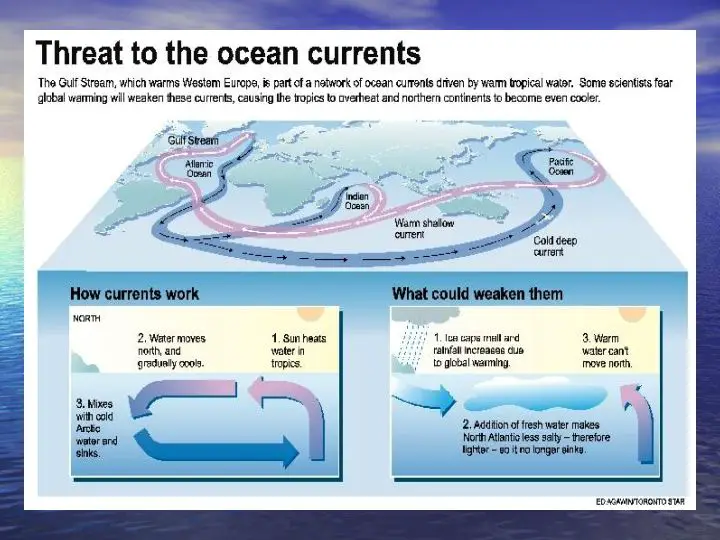



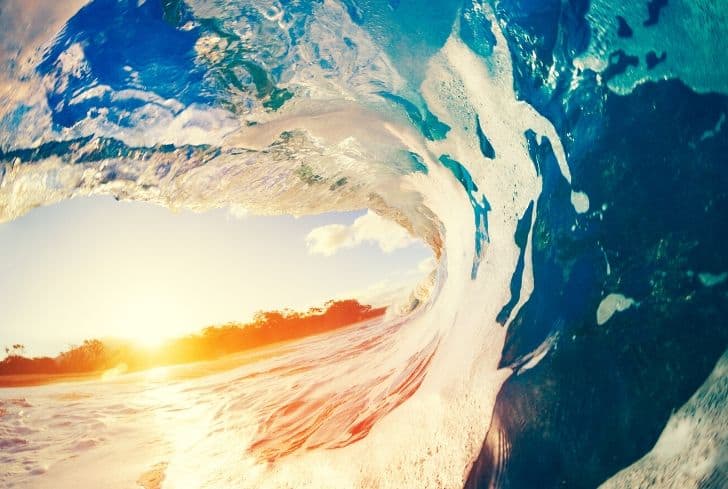

/GettyImages-761606665-5a599d45e258f80037f13b4c.jpg)







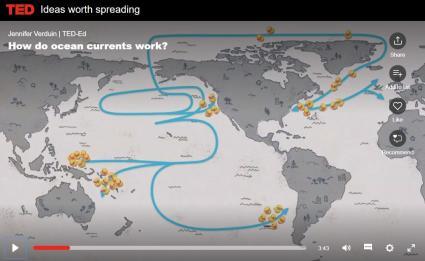




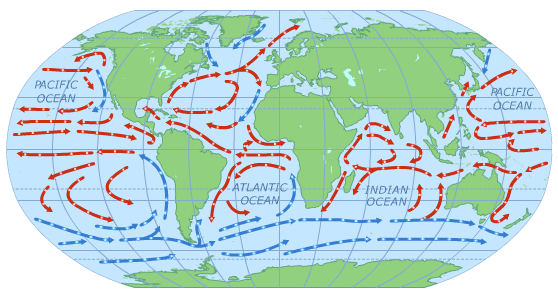
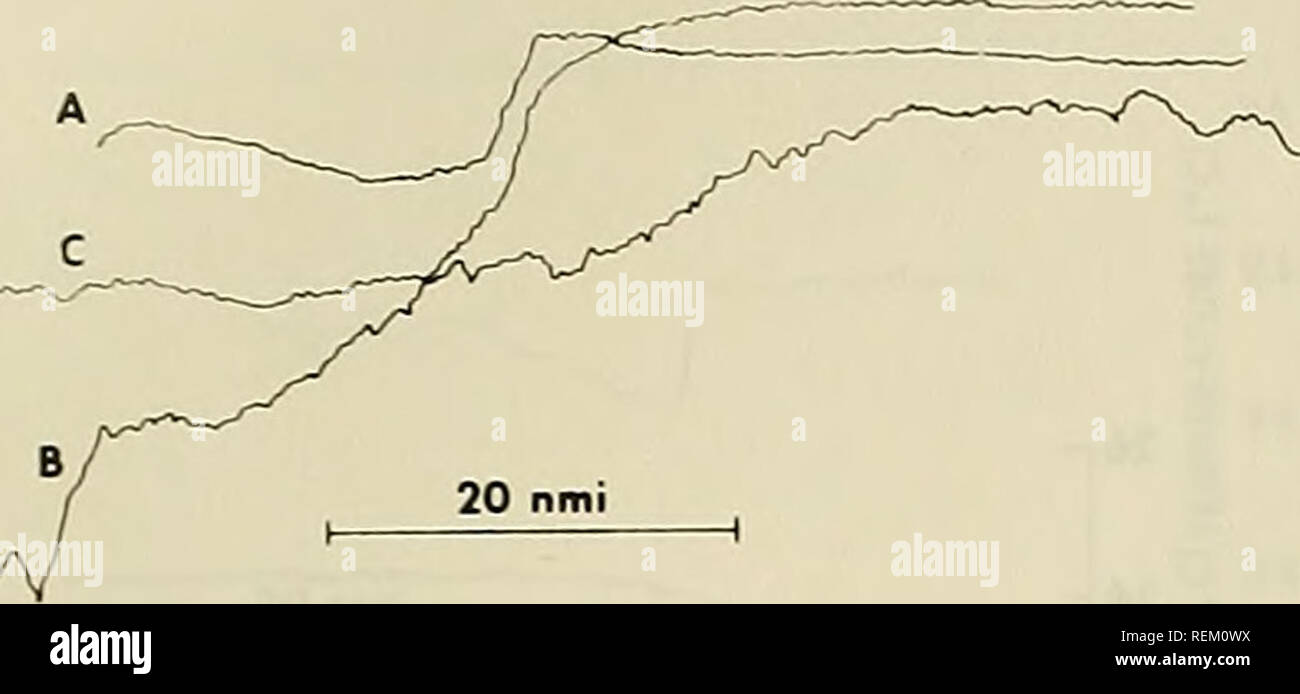







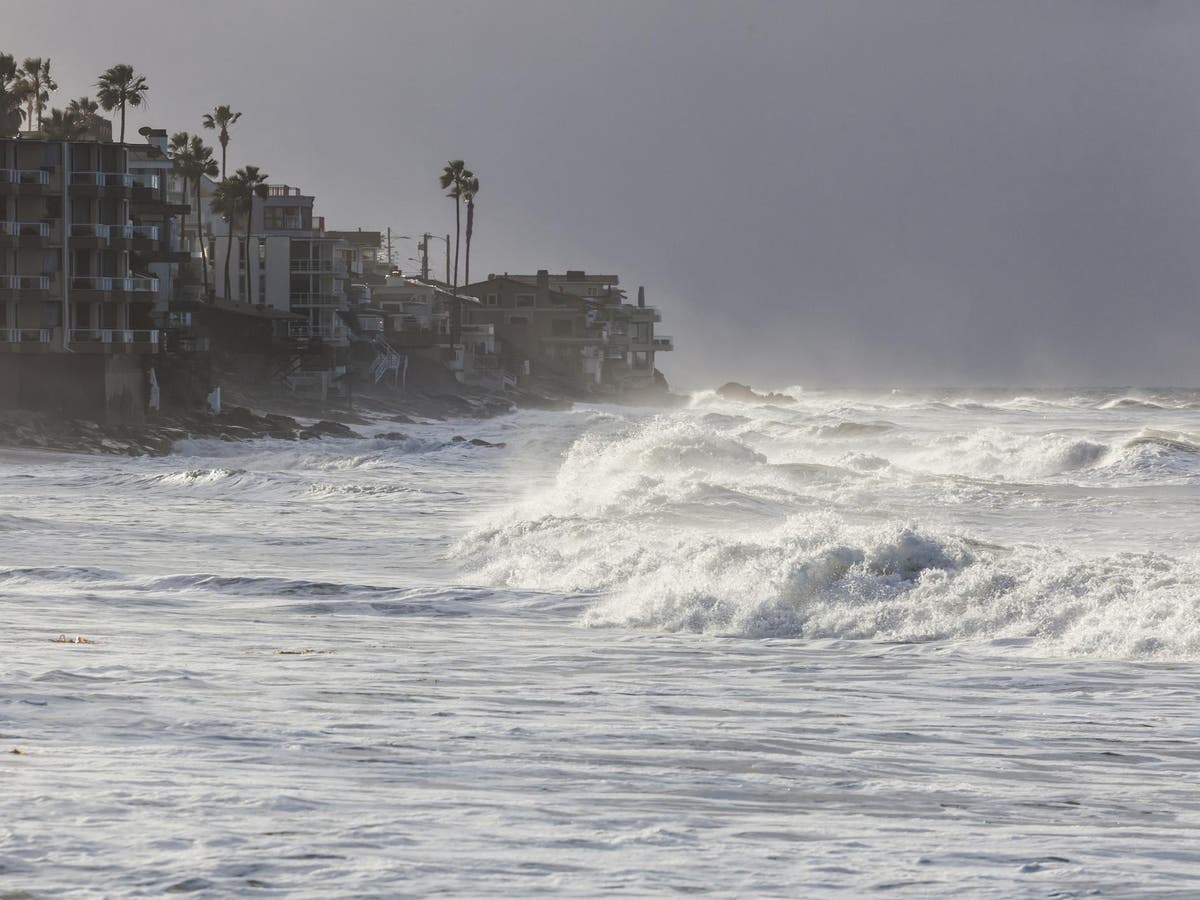

0 Response to "42 how do ocean currents work"
Post a Comment